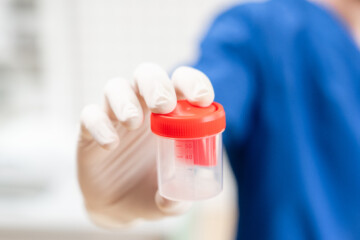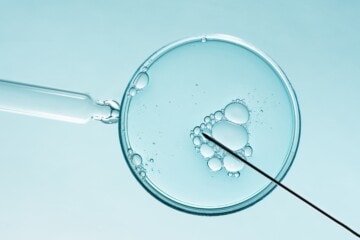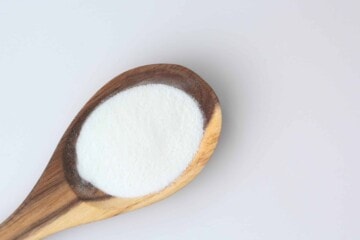EWCM — hmm, what?! Add to that the fertility terminology and abbreviations and you can start to feel trying to conceive advice can be overwhelming. But actually, all this will help you to understand your body better, vastly improving your chances of conceiving. So it’s very much worth the effort.
What is egg white cervical mucus (EWCM)?
Egg white cervical mucus is fertile fluid that helps sperm travel from the vagina to the uterus. The name “egg white cervical mucus” seems an odd one, but it’s really helpful because it helps you to recognise it (more on that, later). As the name suggests, it looks and feels like raw egg white.
EWCM is a type of vaginal discharge. The vaginal discharge comes from cervical mucus which is made by the glands in your cervix. Vaginal discharge will be around on and off throughout the month. But the discharge changes in consistency, appearance and quantity, in relation to where you are in your menstrual cycle.
EWCM is clear and stretchy and you’ll usually see it a few days before your ovaries release an egg to be fertilised by sperm (ovulation). This is your most fertile time of the month. But it can also be present during other times such as just before sexual intercourse or during pregnancy.
If you don’t experience any cervical mucus and therefore no vaginal discharge, this doesn’t mean that you won’t get pregnant, it just means it’s a trickier journey for the sperm. If you experience no discharge at all, flag this up with your GP as it might need further investigation.
When does EWCM discharge occur?
EWCM usually occurs a few days before you ovulate and is designed by nature to help you to conceive. As ovulation approaches, oestrogen levels become very high. It is the effect of high levels of oestrogen that changes the cervical mucus to the consistency of raw egg white. That is to say, there is lots of it, and it is clear, stretchy.
A day or two following ovulation, your cervical mucus thickens and the ‘fertile window’ begins to close.
All cycles and mucus changes can be slightly different, but this will give you an idea using a 28-day cycle as an example:
Days 1 — 5: Your period
Days 6 — 9: A little bit of cervical mucus, or none at all
Days 10 — 12: Thick cervical mucus
Days 13 — 15: Cervical mucus becomes thinner, stretchy and clear; like egg white in appearance and consistency
Days 16 — 21: Cervical mucus thickens
Days 22 — 28: A little bit of cervical mucus, or none at all
Does having EWCM mean that you are fertile?
EWCM is considered to be one of the ovulation symptoms. It’s produced just before ovulation and stops just after ovulation. This is your most fertile time. You can check to see if it’s EWCM by taking a sample of mucus between your fingers. If it stretches and looks like raw egg white then it usually signals fertility and that ovulation is near. This mucus is receptive to sperm and, remember, sperm can live for several days in the female reproductive tract.
EWCM helps you to conceive. Women in their twenties will have around five days of EWCM and women in their thirties may have just one or two or three days of EWCM.
How long after EWCM do you release an egg?
You usually release an egg (ovulate) one or two days after EWCM starts. If you’re trying for a baby, you need to have sex as soon as you see the EWCM and continue while this type of mucus lasts, as these are your most fertile days. Often you can feel when ovulation occurs by a mid-cycle pain, called ‘mittelschmerz’ – literally meaning ‘middle pain’, which can sometimes be felt by women as a pain on one side of the abdomen around mid-cycle during the time of EWCM. Having intercourse following ‘mittelschmerz’ is a great time when trying to conceive.
How to check for EWCM
You can check for EWCM by tracking the changes in your cervical mucus. It’s important to be consistent with making observations on a daily basis. You’ll need to look and touch the vaginal discharge as you need to note the consistency and colour. If it’s stretchy and watery and looks like raw egg white it’s probably EWCM. It should stretch a good few inches. Non-fertile cervical mucus might be crumbly or sticky and it won’t stretch much at all.
Appearance
EWCM will look like raw egg white in appearance — clear.
Consistency
The consistency of EWCM is slippery like raw egg white and often can stretch when you spread it between your finger and thumb.
Sometimes the water content of EWCM is very high and it has more of a watery consistency. In this case, it’s so watery that it won’t hold a shape. This ultra-wetness is a sign of a very fertile EWCM. It can be so wet that you may think your period has come on until you check.
In Summary
If you regularly check your cervical mucus to look out for EWCM you’ll soon spot your most fertile window for baby-making sex so that you give yourself the best possible chance of getting pregnant. It might seem an uncomfortable thing to do at first, but it’ll soon become second nature. Knowing how your body is working is empowering. To further boost your chances of success, ensure that you’re taking Impryl for at least three months to increase your chances of pregnancy by providing the active micronutrients to help maintain metabolic balance.
References
Shahpar Najmabadi et al. Cervical mucus patterns and the fertile window in women without known subfertility: a pooled analysis of three cohorts. Human Reproduction. 2021 Jun 18;36(7):1784-1795. doi: 10.1093/humrep/deab049.
Thijssen, A. ‘Fertility Awareness-Based Methods’ and subfertility: a systematic review. Facts Views Vis Obgyn. 2014; 6(3): 113–123.








